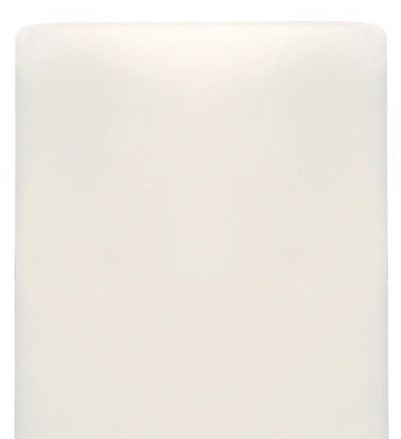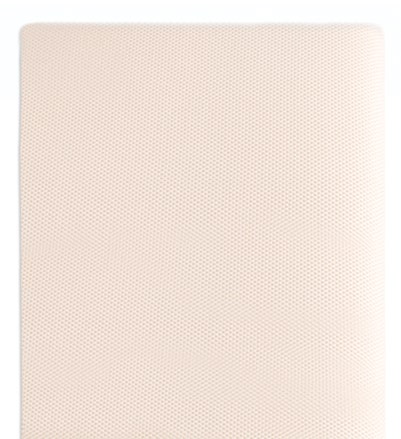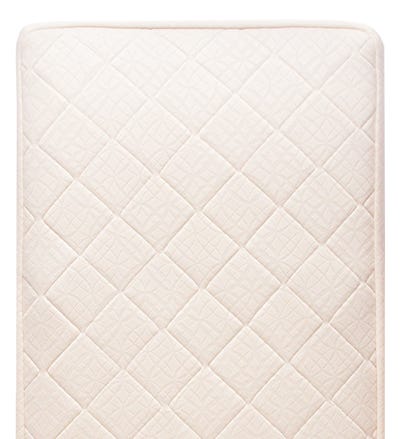Setting up your baby's crib is one of the first (and most important!) tasks you'll undertake as a new parent. Their crib is where your little one will spend countless hours resting, growing and dreaming. It’s essential to create a comfortable sleep environment for them while following safety guidelines.
With so much to consider during crib set up – like bedding and safety – it can be overwhelming to know where to start. In celebration of Baby Safety Month, we’ve put together a guide on the DOs and DON'Ts of setting up your baby’s crib. We’re here to help you navigate this crucial aspect of nursery preparation with confidence and peace of mind.
The DOs of Setting Up Baby's Crib
Sleep more soundly knowing you’ve set up Baby’s safer sleep space when you follow these DOs.


DO Choose a Safer Crib
Your crib should have a strong structural design that will support the weight of your growing little one. Ensure the crib keeps the mattress from dipping or sagging anywhere. A supportive structure helps the healthy development of bones and muscles and may reduce risks of suffocation.
There should be no more than 2 ⅜’’ between the crib bars. Since most aluminum soda cans are about 2 ⅜’’ wide so you can test your crib by taking a soda can and seeing if it can pass through. If it doesn’t, congrats! Your crib passed the bar test.
When you know the crib your baby is sleeping in is safer, you can sleep a little better at night yourself.
DO Place the Crib in a Safer Location
Once you’ve picked and built your crib, the next step is deciding where it should go. It should be placed at least two feet away from any windows, window-blind cords, drapery, wall lamps and vents. It should also be one foot away from any walls and other furniture in the room. These precautions keep your baby away from hazards while in their crib.
DO Use a Firm, Breathable Mattress
You’ve heard us say it before and you’ll hear us say it again: when it comes to crib mattress safety, a firm, flat surface is best. During their first few months, their neck and spine are still strengthening. In order to properly support them during this crucial period of growth, they should sleep on their back on a firm, flat surface. This supports their neck and spine while keeping risks of strangulation and suffocation low, per the CPSC.
The surface where Baby rests their head should also be breathable just in case they roll over in their sleep. Our Breathable Organic Crib Mattress Cover is created with a 3D-pattern that allows for 360° airflow while Baby sleeps. If they were to roll over, they would still be able to breathe through the breathable cover. Plus, breathability aids your baby in temperature regulation and can help to keep them cooler while they sleep. The fact that the cover is machine washable and dryable is a convenient bonus!
DO Follow Safer Bedding Practices
Baby’s crib should only include a mattress and a fitted crib sheet – no toys, bumpers, pillows or blankets. The mattress should fit snugly into the crib so there are no gaps. Whether you choose a traditional crib sheet or a breathable crib sheet, make sure you pick one that fits tight on the mattress you have selected. It should not be loose in any areas and the corners should stay firmly in place.
DO Regularly Check for Wear and Tear
Baby’s mattress and crib get a lot of use with all of the sleep they need. Make a habit of regularly checking over their sleep environment for any wear and tear. You can easily incorporate this into Laundry Day when you clean their fitted sheet.
- Their Mattress: Look for tears, frayed edges, holes, odors and stains. Also be sure to test the mattress’s firmness – it should spring right back up after pushing down on it.
- Their Crib: Check for loose screws and brackets, broken pieces or any wobbliness. Ensure the slats are still no more than 2 ⅜’’ apart and that the mattress is still fitting snugly within the crib.
The DON'Ts of Setting Up Baby's Crib
Now that you know what you should be doing, let’s get into what not to do when setting up Baby’s crib.


DON'T Use Bumpers, Pillows or Blankets
While baby blankets, bumpers and pillows are cute, they should not be placed in Baby’s crib. Their crib should only include the mattress and a fitted sheet. Extra items in Baby’s bed increase the risk of suffocation. If there’s a concern about them staying warm, a wearable blanket is a safer option. A regular blanket poses the risk of covering their face while they sleep.
Bumper pads are now a thing of the past thanks to new safety standards that ensure crib manufacturers design bars of the crib close enough together to keep Baby from slipping through.
These precautions are to prevent anything from covering Baby’s face while they sleep. Anything more than their fitted sheet can become a hazard in the night.
DON'T Place the Crib Near Windows or Cords
Windows and window dressings pose many risks to Baby. They could fall through an open window or a screen or get tangled in drapes, blinds and cords. In addition to the safety hazards, babies are not able to regulate their temperature as well as adults. This means that a drafty window can bring Baby’s temperature down, just as a sunny window could cause them to overheat.


DON'T Overload the Crib with Toys
Yes, Baby might love their stuffed toys, but they have a place and it’s not in Baby’s crib. Just like with blankets and pillows, stuffed toys go from being cute to a suffocation hazard when Baby sleeps – they do not belong in the crib.
DON'T Use Second-Hand Cribs Without Proper Inspection
If you’re using a second-hand crib, be sure to give it an in-depth inspection before using it. Check for any missing, loose, broken or poorly installed hardware. Also ensure that there are no missing or cracked slats. If the crib was made before 1978, you’ll also want to test for lead paint. Plus, make sure the bars of the crib are no more than 2 ⅜’’ apart and that the mattress fits snugly into the crib with no gaps.
We hope we’ve given you some peace of mind for setting up Baby’s crib. Now it’s time to welcome Baby home and watch as they drift off to dreamland in their crib for the first time. You got this!
Looking for more crib tips? Learn why a waterproof mattress is a must. Using a bassinet? Check out our safety tips for Baby in a bassinet.
 BABY
BABY  KIDS
KIDS  ADULT
ADULT  LEARN
LEARN  STORES
STORES 





